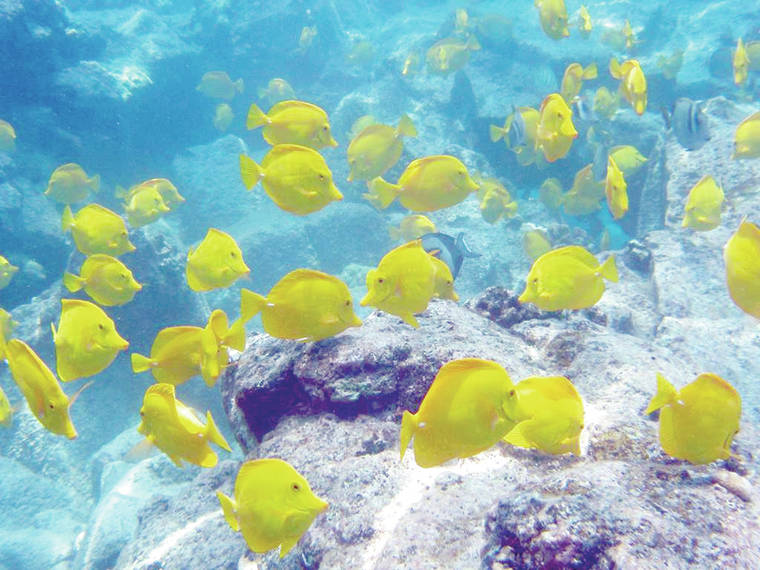LIHU‘E — Scientists in Hawai‘i have made breakthroughs in studies of the popular yellow tang aquarium fish that could lead to a shift to aquaculture for procurement instead of wild catching.
Yellow tang have been the top aquarium fish collected in the waters of Hawai‘i, and they’re one of the world’s most popular aquarium fish.
To catch these fish, permits are needed with the state. Due to declining fish stock levels, the state Department of Land and Natural Resources has halted issuing permits for aquarium fishing. The action is due to a 2017 Hawai‘i Supreme Court decision.
Before aquarium-fishing permits can be declared valid again, the industry has to prove they can capture fish from the waters around Hawai‘i Island for aquarium sales without harming the environment, fish-stock levels, reefs or cultural practices attached to the fish, among other things.
No permits have been issued since the 2017 decision, though aquarium fishing using other gear, considered less optimal for aquarium fishing but not regulated under Hawai‘i law, continues.
In March, an environmental impact statement for proposed aquarium fishing in West Hawai‘i waters was rejected by the state Board of Land and Natural Resources. It’s the second time BLNR has rejected environmental review documents on the issue.
Scientists with Hawai‘i Pacific University’s Oceanic Institute are making headway in finding ways to boost at least some of the populations of aquarium fish species, particularly the yellow tang.
Fish have been produced in captivity by researchers at the university, and they’ve recently been shipped to Biota Aquariums in Fort Lauderdale, Florida, a sustainable wholesaler.
Fully grown, they’ll be about the size of a human hand. Some live to be 40 years old.
It’s taken almost 20 years to reach this point of survival by the thousands, according to a release about the project. The work with yellow tang is among the breakthroughs that could spell relief for wild fish populations near Hawai‘i’s coral reefs and around the world.
Researcher Catham Callan said they’ve made huge strides over the past few years, and pointed out five years ago they were only producing “dozens of fish at a time.”
“So in that short period of five years going from dozens to thousands is really exciting, and we know we have to get to tens of thousands before we will become a viable alternative to the wild trade,” Callan said.
The growing field of aquaculture will continue to change not just the aquarium trade, but the food-fish industry as well, as some studies show humans currently risk fishing the world’s oceans beyond their capacity.
“With a global population that’s going to be 10, 11 billion in the next 10 years, we need to have a way to feed them,” Callan said. “And we need to have a way to protect our environment. And so aquaculture can do both of those things.
“It can provide food for a growing population, and it can also help conserve the marine environment by taking pressure off the ecosystem and maybe even someday replacing depleted fisheries with cultured species,” Callan said.
•••
Jessica Else, editor-in-chief, can be reached at 245-0457 or jelse@thegardenisland.com.






Back when I was growing up, Tang was only available in orange.